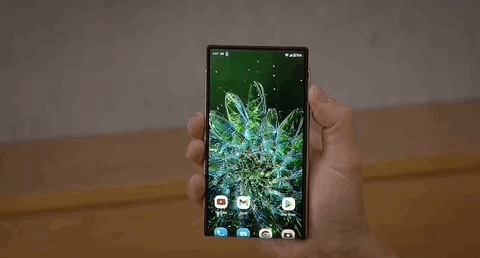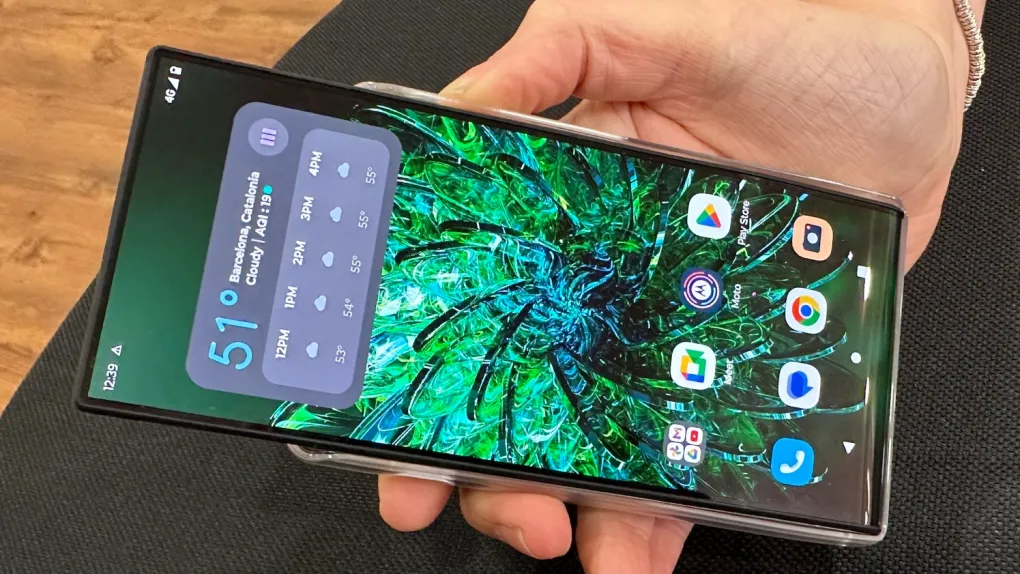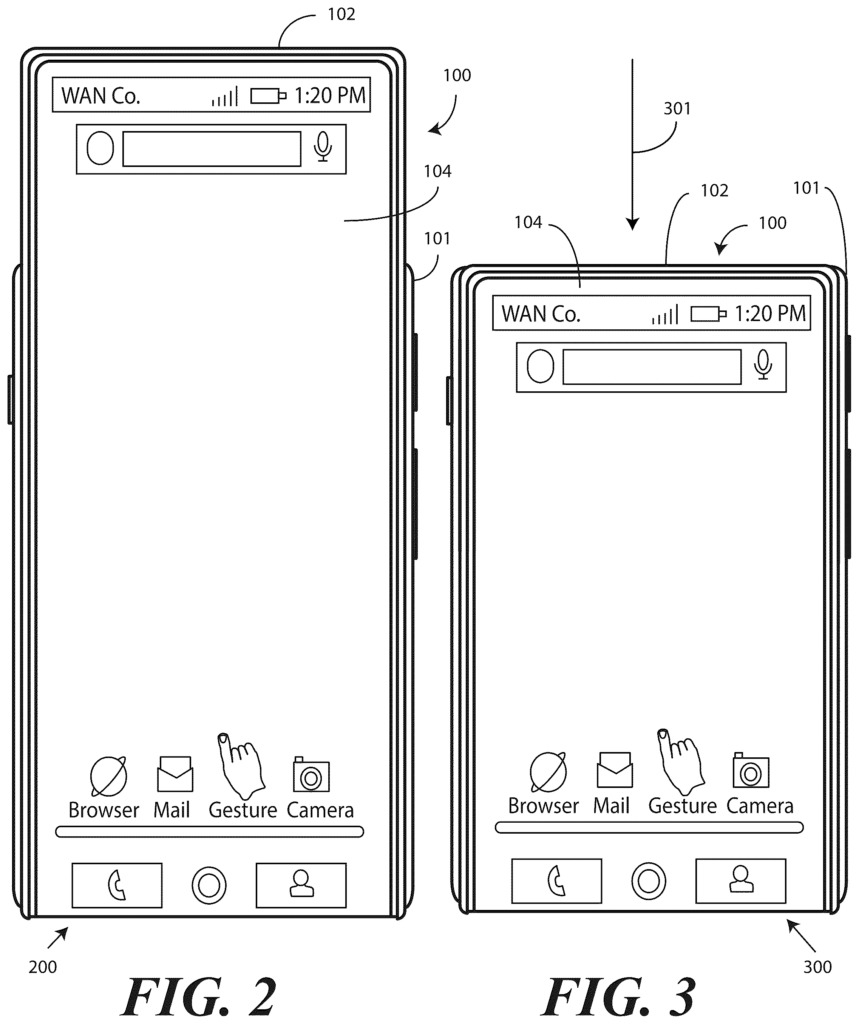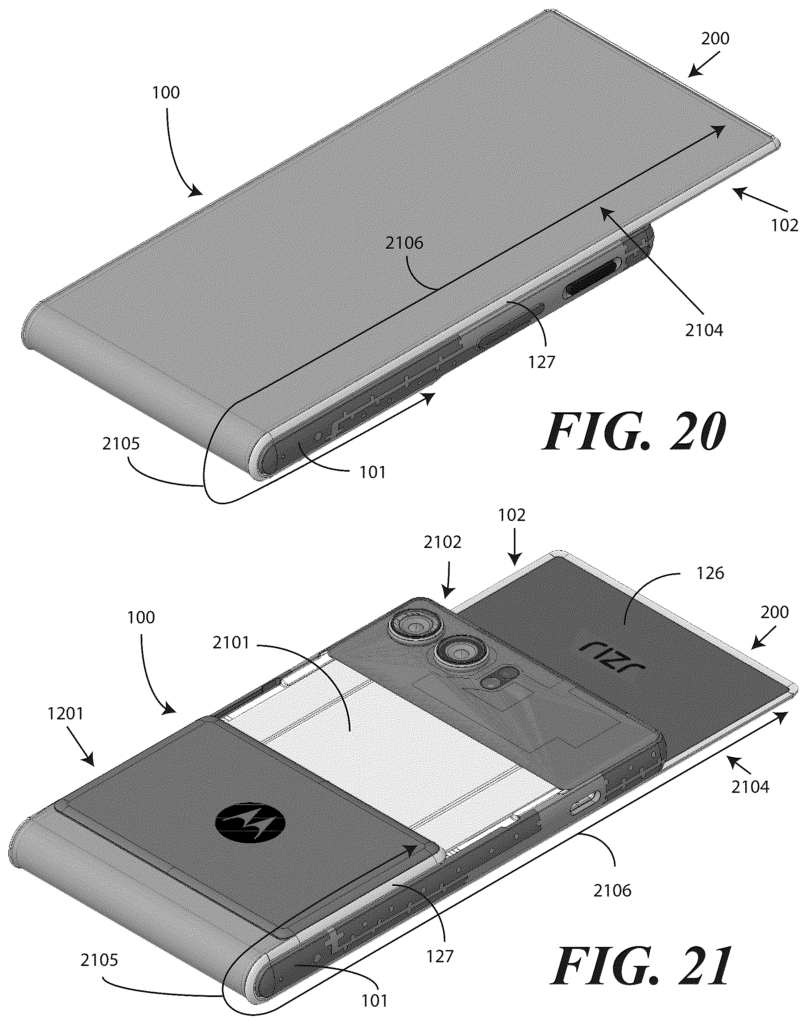Remember those old-school roll-up maps? Well, Motorola is bringing that concept to your pocket. The rollable phone takes it a step further—giving you extra screen space when you need it, and a compact form when you don’t.
Motorola’s rollable phone represents a bold step in smartphone innovation, designed to offer unmatched versatility and functionality. Recent patents highlight features like advanced fingerprint sensors integrated across the display, enabling effortless unlocking from any screen area. This technology underscores Motorola’s focus on delivering cutting-edge solutions that combine compact design with a fully immersive experience. With rollable displays positioned as the next big leap beyond foldable devices, Motorola is setting a new benchmark in user-centric technology.

Functioning and Working Principle of Motorola’s rollable phone:
- Expandable Rollable Display: The phone features a flexible OLED display that can transition from a compact size (approximately 5 inches) to an extended size (around 6.5 inches). The display rolls upward or downward to provide a larger screen area when needed.
- Motorized Mechanism: A motorized system enables the smooth extension and retraction of the display. This allows users to switch between different screen sizes with the press of a button.
- Secondary Display Utility: When in its compact form, the portion of the display that wraps around the back can function as a secondary screen, displaying notifications or quick updates without fully extending the phone.
- Advanced Biometric Integration: Recent patents suggest that the device includes advanced fingerprint sensors, potentially covering the entire screen, enabling users to unlock the device from any point on the display.
- Space Optimization: The rollable design eliminates the need for a larger, permanently extended display, offering portability while still providing a large screen when required.

Patent Behind this Motorola’s Rollable Phone
We’ve analyzed key patents related to Motorola’s rollable phone. Read the summary below and discover the ingenious innovations behind this breakthrough technology!
- The patent US20240126335A1 addresses the challenge of maintaining the structural integrity and functionality of flexible displays used in devices like rollable smartphones. Flexible displays can suffer from issues like stress, misalignment, or reduced durability when bent or rolled repeatedly. This invention introduces a specialized system of layers and mechanisms that evenly distribute tension and compression forces, ensuring the display remains robust and operational over extended use. By mitigating wear and tear on the flexible components, this technology helps improve the lifespan and reliability of devices featuring rollable or foldable displays.

- The patent US20240126333A1 introduces multiple fingerprint sensors across Motorola’s rollable display, allowing users to unlock the device from any point on the screen in both retracted and extended modes. This innovation eliminates the need for a fixed sensor location, enhancing convenience and ensuring seamless security for flexible devices.
- The patent CN117912362A improves the reliability of rollable displays by using a specially designed back panel with varying flexibility. This structure supports the display, ensuring smooth rolling and unrolling while preventing damage from bending or tension. It addresses issues like stress, material wear, and display distortion, enhancing durability and performance in rollable devices.
- The CN117912356A patent focuses on improving the durability of rollable or foldable displays. It introduces a design that minimizes damage from repeated rolling and unrolling by ensuring the flexible display and its surrounding components can withstand strain without compromising quality. The technology aims to extend the lifespan and reliability of flexible screens, solving the problem of wear and tear in rollable devices.
- The US20240129397A1 patent introduces a system for embedding multiple fingerprint sensors across a rollable device’s display, allowing users to unlock the device from any part of the screen, regardless of its rolled or extended state. This solution addresses the challenge of maintaining secure and responsive fingerprint authentication on dynamic displays, which traditionally have fixed sensor locations. By adapting to the changing screen size, the system ensures seamless access and consistent performance.

- The US20240126349A1 patent enhances the durability and performance of rollable displays in portable devices. It focuses on using specialized materials and design techniques to prevent damage during the repeated expansion and retraction of the screen. This innovation addresses the challenges of mechanical stress and wear in flexible screens, providing a reliable solution for maintaining screen integrity and smooth operation in rollable devices.
Companies Working on Similar Technologies
Motorola’s rollable phone is not the only innovative device in the emerging rollable phone category. Other tech giants are also working on flexible display technologies, including:
- LG Rollable: LG’s rollable phone features a flexible OLED screen that expands and retracts with a simple touch, similar to Motorola’s approach.
- TCL: Known for its concept foldable and rollable display phones, TCL is exploring flexible screens that can adapt to various use cases.
- Samsung: Although focusing on rollable devices like the Rollable Flex, Samsung is also experimenting with rollable concepts that could rival Motorola’s product.
Motorola’s rollable phone sets itself apart from competitors with its unique motorized rolling mechanism, which provides a smooth and seamless transition between compact and expanded screen sizes. Unlike traditional foldables, this technology eliminates the need for visible hinges and creases, providing a more versatile user experience. With rollable phones representing the future of flexible display technology, Motorola’s innovation has the potential to transform how users interact with their devices, opening up new possibilities for portable entertainment, productivity, and design.





